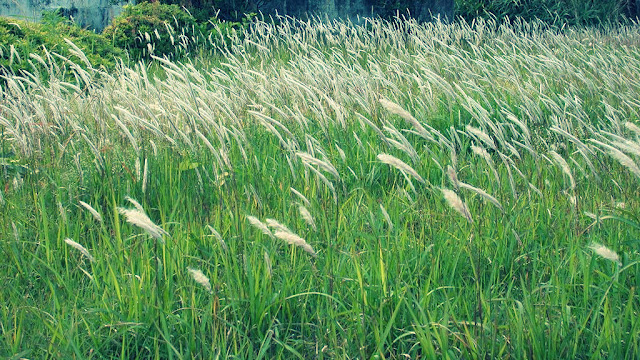Cogongrass Health Benefits, Herbs To Treat Gonorrhea Or Syphilis
Cogongrass or called Imperata Cylindrica L. Raeusch, another name is Bladygrass, Speargrass, Silver-spike or Satintail. This plant is a weed, sharp-leaved grass that grows wild among the plantation. The morphology and cogongrass health benefits to treat Gonorrhea explained on this page, the benefits of this plant are numerous for use as herbs.
Cogongrass spreads naturally, can found in India, East Asia, Southeast Asia, North Asia, Micronesia, Australia, Europe, Africa, and America. The development of plants considered highly invasive, often considered a weed that is very disturbing agriculture. But in herbal medicine, this plant is very powerful treat syphilis disease, bloody urine and pus or, gonorrhea.
Cogongrass Health Benefits
Cogongrass grows wildly, here is a plant morphology that grows around your garden:
- Herbaceous plant species, grass that grows creeping, plant height 30 to 180 cm. Characteristics of stems of plants rhizomes, creeping under the ground, stems grow upright to form a flower, solid and there rare-haired segments.
- Leaves of single-shaped plants, leaf stalks close each other. Leaf-shaped ribbon, sharp pointed leaves, looking erect and rough. The leaves have rare hair, length 35 to 80 cm and width up to 18 cm.
- Characteristics of flowers and grains are compound. Flower somewhat bud, length 6 to 28 cm. Each branch has 2 grains, a flower stalk measuring 1 to 3 mm. There are gluma, there are 3 to 6 veins, the egg-shaped husk widened, short cilia measuring 1.5 to 2.5 mm.
- Characteristic stamens have a head size of 2.5 to 3.5 mm. Yellowish or purple white, rice-type fruit, and shaped beans over 1 mm long.
Cogongrass flowering in January to December, growing at an altitude of up to 2700 m above sea level. This plant thrives and develops in open or semi-closed areas. Usually found in swamps, cleared land, by rivers, secondary forests, burnt land, and plantations. Cogongrass plants strongly influence other cultivation plants because they absorb relatively high sodium, harmful weeds.
According to traditional medicine in Indonesia, the part used for herbs is Cogongrass root. The following chemical compounds contained in Cogongrass root are:
- Arundoin, fernenol, isoarborinol, cylindrin, simiarenol, cholesterol, stigmasterol, ßsitosterol. Skopoletin, skopoline, p-hydroxybenzaladehide, catechol.
- Chlorogenic acid, isocyanogenic acid, pkumarat acid, neoclorogenic acid, acetic acid, oxalic acid, d-malic acid, citric acid.
- Potassium is 0.75% of dry weight, calcium and 5-hydroxytryptamine.
According to the study, and the roots of Cogongrass have 5 kinds of Flavonoid derivatives, Derivatives 3 ', 4', 7-Trihidroksi Flavon. Derivatives of 2 ', 3'-dihydroxy Kalkon, and 6-hydroxy flavanols. The flavonoid derivatives may include flavones, substituted flavonols at 3-0H. Flavanone or isoflavones are present in the extract fraction that is soluble in Ethylacetate at Cogongrass roots. In the fraction of water-soluble extracts contain flavone compounds without free OH groups, flavones, flavonols. Indonesian ancestors have long used Cogongrass health benefits to treat some chronic diseases.
Reference
- Imperata cylindrica (Cogongrass). Centre for Agriculture and Bioscience International (CABI). November 16, 2016.
- The structures of arundoin, cylindrin and fernenol: Triterpenoids of fernane and arborane groups of imperata cylindrica var. koenigii. Publish by Tetrahedron, 1968. DOI:10.1016/0040-4020(68)88023-8
- Imperata Cylindrica, image courtesy of wikimedia commons.







No comments: